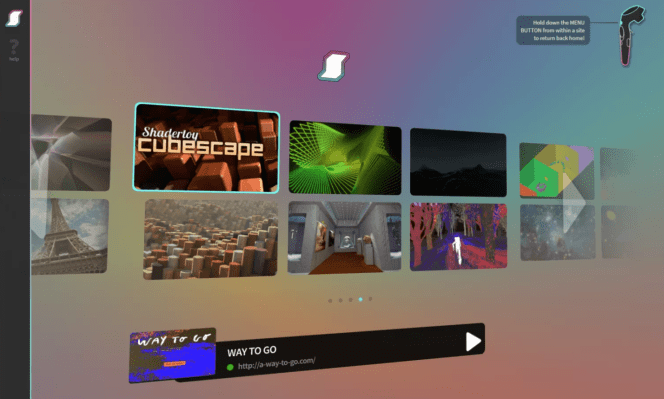Virtual reality’s content problem has been so frustrating for users because the medium’s promise has been that it can take users anywhere. As developers continue to build up these worlds, Supermedium is launching out of Y Combinator’s winter batch with a browser that it hopes can show people the promises of virtual reality content that lives across the web.
While Oculus and Samsung have already experimented with and shipped VR browsers, the focus of those products has seemed to initially be centered heavily on giving users access to information housed on 2D websites. In a large part, that’s because the Gear VR and Rift already have the a content discovery platform by way of a dedicated app store.
The team at Supermedium wants to build a VR browser that fully lives up to the promises they see in WebVR, a platform that can take you from a link to a fully immersive world in seconds. They’re more focused on creating a ground-up solution that is built to accommodate 3D content first with the eventual goal of creating a web where you can hop in between 3D experiences without ever leaving them.
When you jump into Supermedium, experiences don’t take minutes to download, they take seconds to open. It offers a great place for users to quickly find bite-sized VR experiences that aren’t only very cool, but also showcase that WebVR’s potential is pretty endless.
Currently, the broadest deal of VR content is housed in Steam, a store built for PC gamers. The site has grown to accommodate content that would’ve generally fallen outside its purview but it still holds standards that don’t make it an ideal place for tinkerers to show off their latest idea.
Supermedium wants to become the home for VR memes, small games, stores and VR web pages in a way that becomes a sort of Yahoo Directory for the new medium.
The team’s co-founders (Diego Marcos, Kevin Ngo and Diego Goberna) were all part of the Mozilla team behind A-Frame, an open-source web framework for building VR that has been pretty influential among early WebVR developers. As may be expected, the team has more features in store for Supermedium that move beyond content discovery as they focus on building up a browser that attracts interest from VR developers as well as users. As the augmented reality space grows, the team hopes to add focus there as well.
“We witnessed first-hand how slow the Web was to react to the rise of smartphones and app store ecosystems. We’re not going to let that happen again with VR,” the team wrote in a launch blog post.
The team acknowledged that the industry is in a bit of a “VR winter,” but that by staying lean they will be able to continue to build up their WebVR expertise while avoiding the pitfalls of other VR startups that sought to grow too fast in a consumer space that still has a long road ahead of it.
While Oculus and Google have their eyes firmly set on building out growth on their mobile platforms, Supermedium wants to focus on an experience that you can control with your hands and is limiting the browser to high-end VR platforms as a result. At the moment this means the Oculus Rift and HTC Vive, soon the team hopes to add Microsoft MR support.
You can download SuperMedium here.
